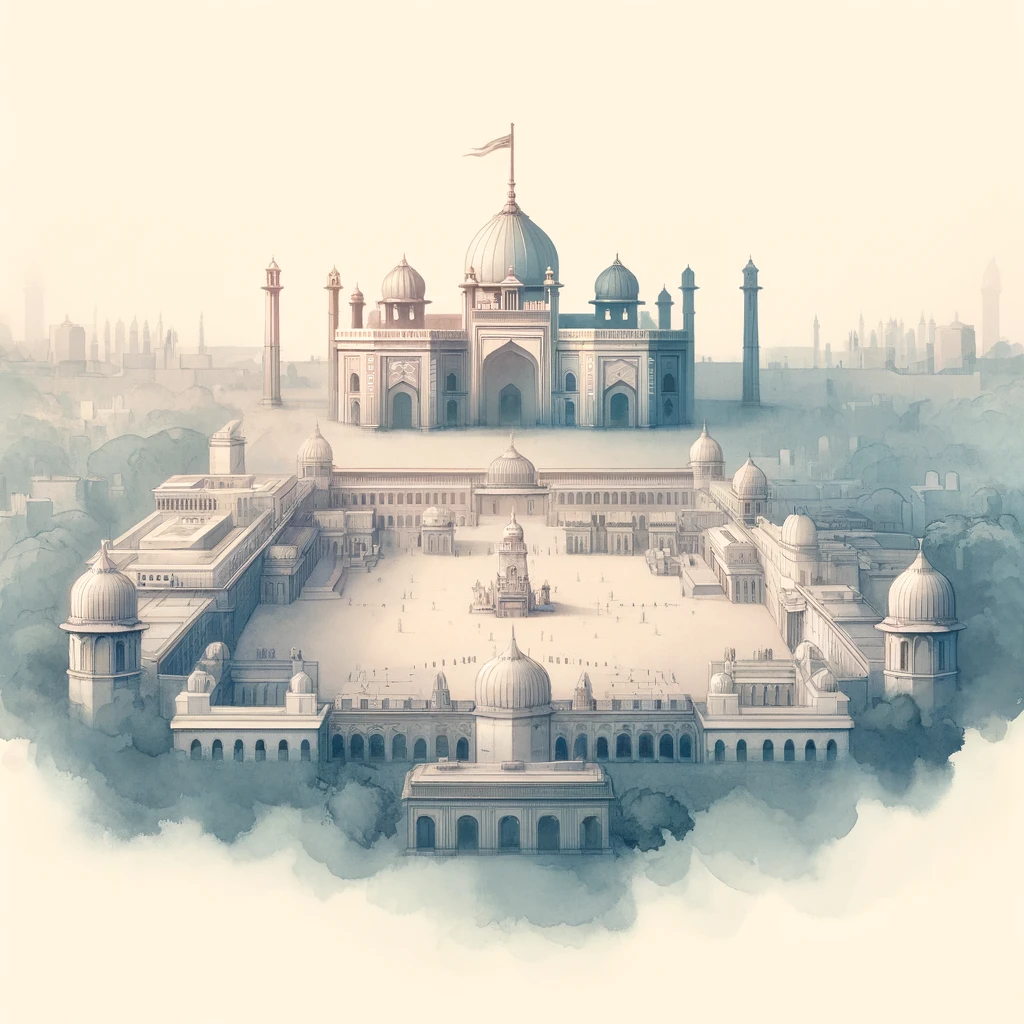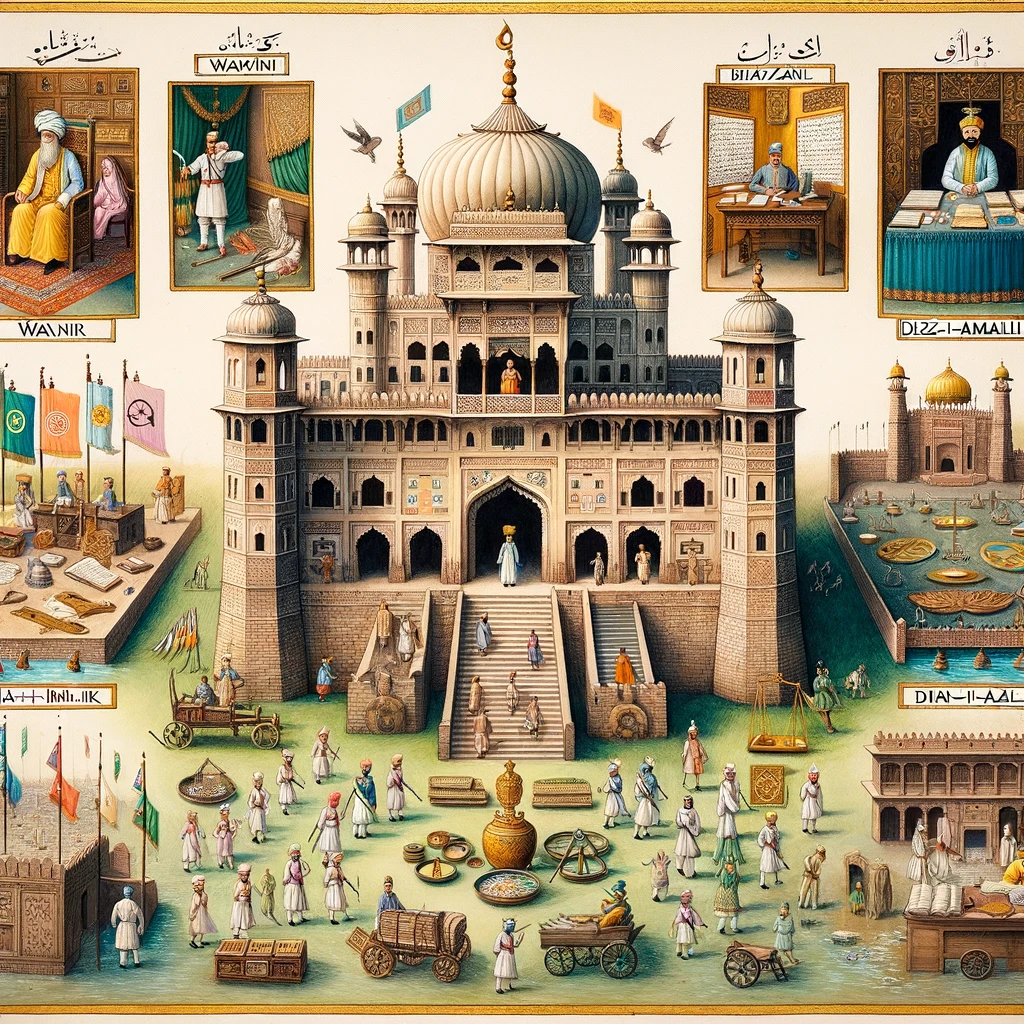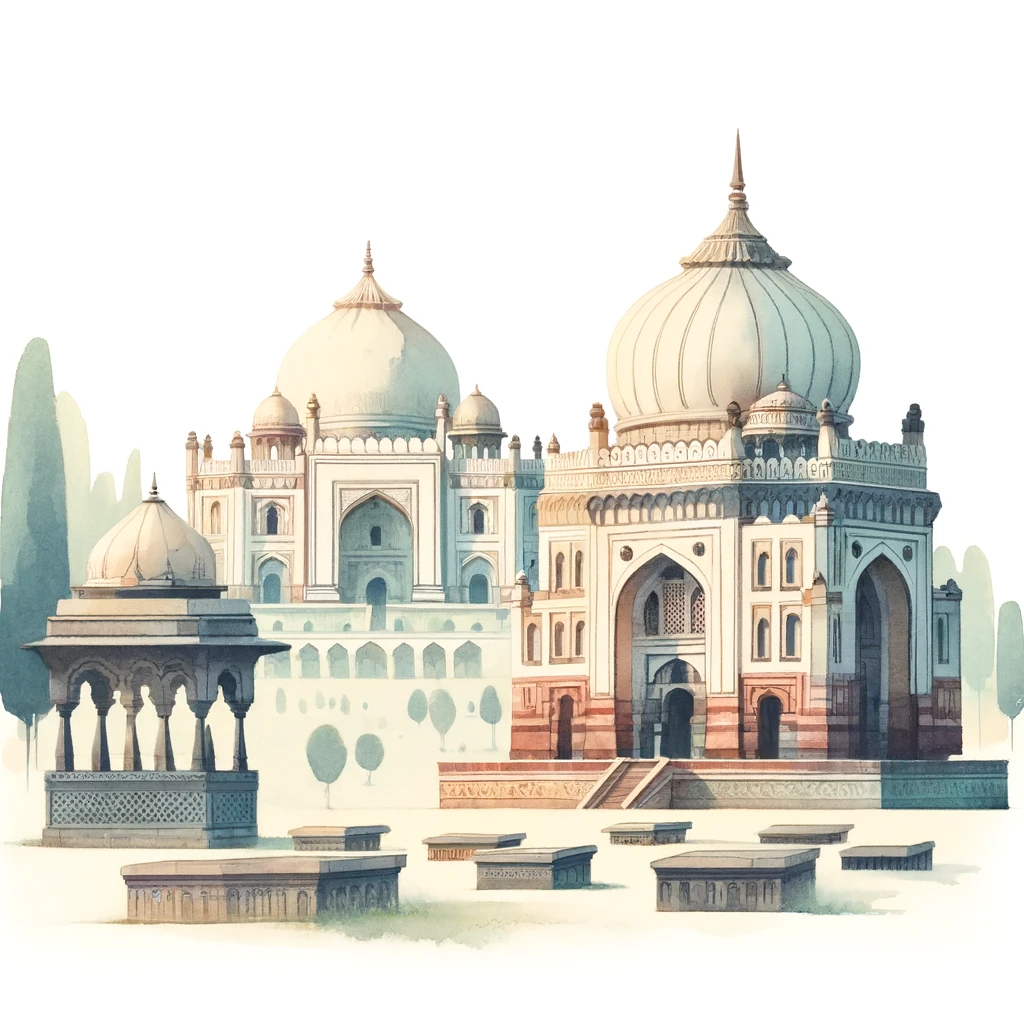The Delhi Sultanate, which lasted from 1206 to 1526, was a significant period in Indian history marked by the establishment of Muslim rule in northern India. The political and administrative structure of the Delhi Sultanate was complex and highly centralized, with the Sultan at the apex of the hierarchy. This structure helped consolidate power and manage a vast and diverse territory.
The empire was divided into provinces for better control. Each province had a governor. They collected taxes and maintained law and order. The army was strong and played a key role in protecting the kingdom. The Delhi Sultanate’s administration helped maintain stability and prosperity for many years.

The Role of the Sultan
The Sultan was the supreme authority in the Delhi Sultanate. As the head of state, the Sultan held absolute power over the military, judiciary, and administration. The Sultan’s authority was based on a combination of Islamic principles and pragmatic governance, ensuring both religious legitimacy and effective control over the empire.
Key functions of the Sultan included:
- Military Leadership: The Sultan led military campaigns to expand and defend the empire. This included organizing the army, appointing military commanders, and planning strategies.
- Judicial Authority: The Sultan was the highest judicial authority, responsible for upholding Sharia law and dispensing justice. He often delegated judicial duties to Qadis (judges) and Muftis (legal advisors).
- Administrative Oversight: The Sultan oversaw the functioning of various administrative departments and appointed key officials to manage the day-to-day affairs of the state.
The Bureaucracy
The administration of the Delhi Sultanate was supported by a well-structured bureaucracy, which was divided into several key departments. Each department was headed by a high-ranking official, often appointed based on merit and loyalty to the Sultan.

Key components of the bureaucracy included:
- Wazir (Chief Minister): The Wazir was the head of the Diwan-i-Wazarat (Department of Revenue and Finance). The Wazir managed state finances, collected taxes, and oversaw expenditures.
- Ariz-i-Mamalik (Military Department): This department was responsible for maintaining the army, including recruitment, training, and the supply of arms and provisions. The Ariz-i-Mamalik ensured the readiness of the military for campaigns.
- Diwan-i-Insha (Department of Correspondence): This department handled official correspondence and maintained records. It played a crucial role in communication within the empire and with foreign entities.
- Diwan-i-Risalat (Department of Foreign Affairs): This department managed diplomatic relations with neighboring states and foreign powers. It also dealt with issues related to protocol and treaties.
- Diwan-i-Qaza (Judicial Department): This department was responsible for the administration of justice. Qadis and Muftis worked under this department to interpret and enforce Islamic law.
Provincial Administration of Delhi Sultanate
The Delhi Sultanate was divided into several provinces, known as Iqtas. Each Iqta was governed by a noble or military commander appointed by the Sultan. These governors, known as Muqtis or Iqtadars, were responsible for maintaining law and order, collecting taxes, and managing local administration.
Key aspects of provincial administration included:
- Revenue Collection: The Muqtis were tasked with collecting revenue from their respective Iqtas. They retained a portion of the revenue for their expenses and remitted the rest to the central treasury.
- Military Obligations: The Muqtis maintained a contingent of troops to support the Sultan in times of war. They were expected to mobilize their forces when called upon by the central government.
- Local Governance: The Muqtis administered justice, managed public works, and ensured the implementation of the Sultan’s policies at the local level. They acted as the Sultan’s representatives in their provinces.
Conclusion
The political and administrative structure of the Delhi Sultanate was a robust system designed to centralize power and ensure efficient governance. The Sultan, supported by a well-organized bureaucracy and provincial administration, maintained control over a vast and culturally diverse empire. This structure allowed the Delhi Sultanate to flourish for over three centuries, leaving a lasting impact on the Indian subcontinent’s political and cultural landscape.


